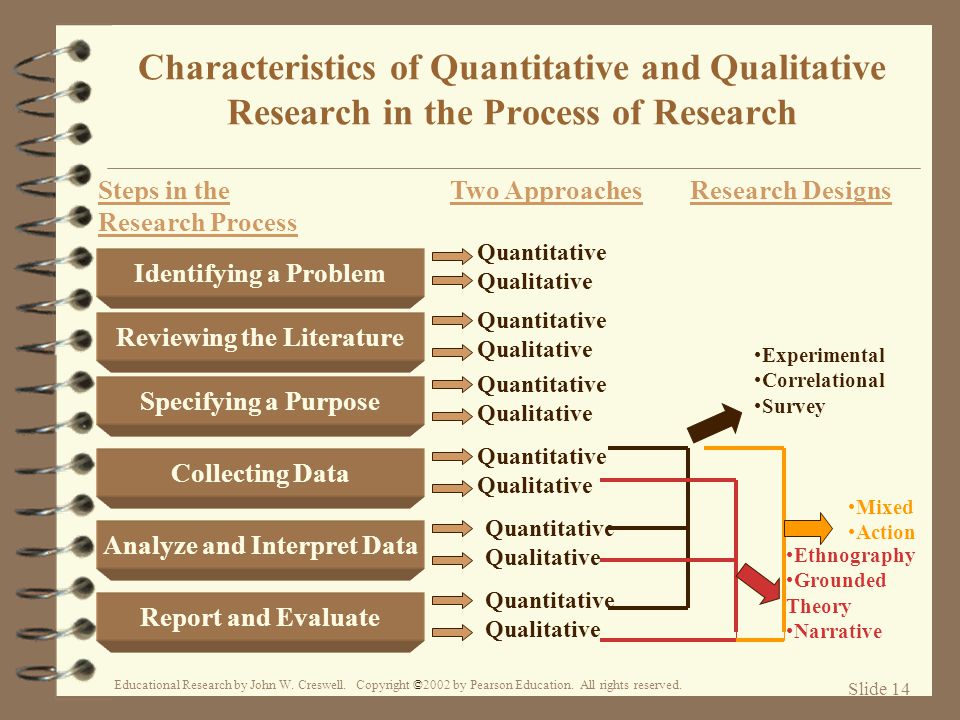
Images - Google Images Modern Historical Writing and Research in Inda -www.historydiscussion.net


Attribution Norton Sociology - www.norton.com./soc
Attribution John W. Cresell, Pearson Education 2002.




Welcome to the EDP 612 Research Guide. The tabs above will lead you to resources for your course. If you have any questions, comments or recommendations about this guide please let me know.
QUALITATIVE VERSUS QUANTITATIVE RESEARCH Criteria Qualitative Research Quantitative Research Purpose To understand & interpret social interactions. To test hypotheses, look at cause & effect, & make predictions. Group Studied Smaller & not randomly selected. Larger & randomly selected. Variables Study of the whole, not variables. Specific variables studied Type of Data Collected Words, images, or objects. Numbers and statistics. Form of Data Collected Qualitative data such as open- ended responses, interviews, participant observations, field notes, & reflections. Quantitative data based on precise measurements using structured & validated data-collection instruments. Type of Data Analysis Identify patterns, features, themes. Identify statistical relationships. Objectivity and Subjectivity Subjectivity is expected. Objectivity is critical. Role of Researcher Researcher & their biases may be known to participants in the study, & participant characteristics may be known to the researcher. Researcher & their biases are not known to participants in the study, & participant characteristics are deliberately hidden from the researcher (double blind studies). Results Particular or specialized findings that is less generalizable. Generalizable findings that can be applied to other populations. Scientific Method Exploratory or bottom–up: the researcher generates a new hypothesis and theory from the data collected. Confirmatory or top-down: the researcher tests the hypothesis and theory with the data. View of Human Behavior Dynamic, situational, social, & personal. Regular & predictable. Most Common Research Objectives Explore, discover, & construct. Describe, explain, & predict. Focus Wide-angle lens; examines the breadth & depth of phenomena. Narrow-angle lens; tests a specific hypotheses. Nature of Observation Study behavior in a natural environment. Study behavior under controlled conditions; isolate causal effects. Nature of Reality Multiple realities; subjective. Single reality; objective. Final Report Narrative report with contextual description & direct quotations from research participants. Statistical report with correlations, comparisons of means, & statistical significance of findings. The content in the above was taken from the following sources: Johnson, B., & Christensen, L. (2008). Educational research: Quantitative, qualitative, and mixed approaches (p. 34). Thousand Oaks, CA: Sage Publications. Lichtman, M. (2006). Qualitative research in education: A user’s guide (pp. 7-8).